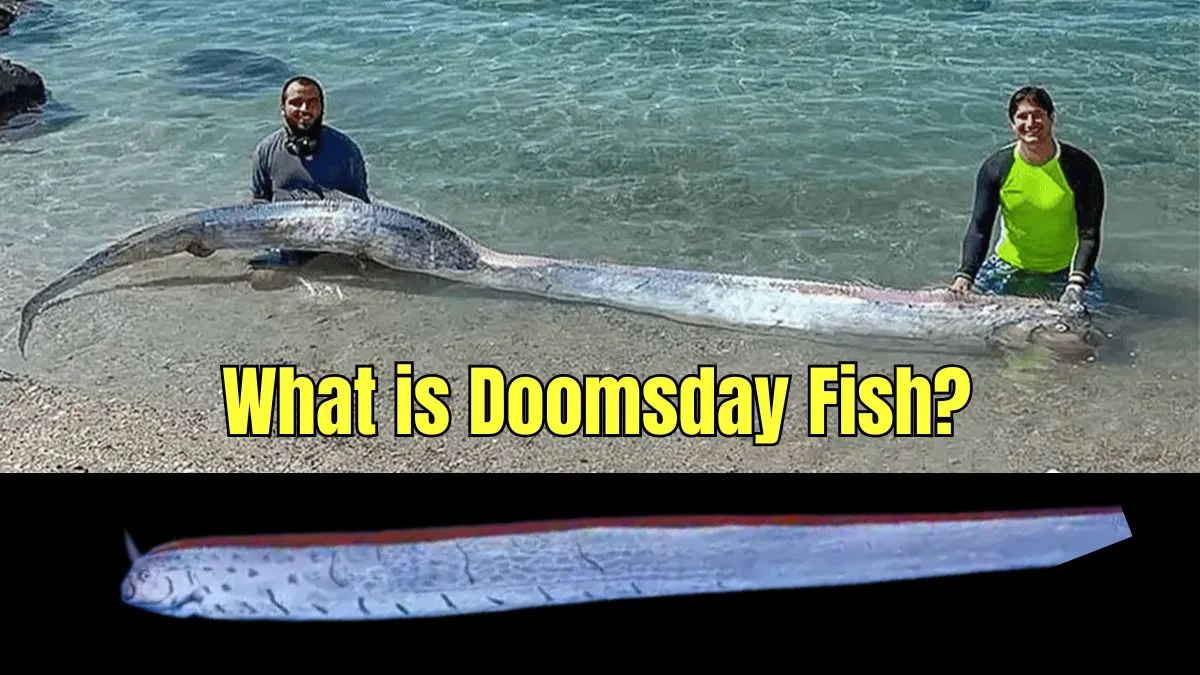The mysterious oarfish, sometimes referred to as the "doomsday fish," is a deep-sea fish that has made an appearance on several continents in recent months. The oarfish, which is rarely seen near the surface, was once thought to be a sign of approaching natural calamities in Japanese folklore. However, since May 2025, it has made four surface appearances—once in India and three times in Australia, New Zealand, and California—which has sparked both public and scientific interest.
What is a Doomsday Fish?
Oarfish, often regarded as doomsday fish, are long, ribbon-like fish that live 200–1,000 meters below the surface of temperate and tropical oceans. They are the longest bony fish, reaching lengths of nearly 30 feet (9 meters). They mostly eat small aquatic organisms like plankton and crustaceans and pose no threat to humans.
Oarfish can grow up to 11 meters in length. They only come to the surface when they are ill, dying, or breeding; otherwise, they typically reside in deep water.
Why is Oarfish Called Doomsday Fish?
The oarfish is known as the "doomsday fish" in old Japanese folklore because its surface appearance is interpreted as a sign of impending natural disasters. Oarfish have occasionally been seen washing up on the shore before significant earthquakes, particularly in Japan. They believe it has the ability to detect seismic events beneath the surface and surface to alert people. But science has never substantiated this theory.
What do the Researchers Say?
Although the oarfish boom is seen in mythology as a sign of impending doom, marine biologists provide more rational reasons. According to scientific theories, these deep-sea fish may have become disoriented and attempt to ride to the surface or strand themselves as a result of anomalous oceanic phenomena such as offshore seismic activity, temperature changes, toxicity, or disease.
However, it is important to take into account the fact that oarfish sightings are frequently close to earthquakes. Although there is conflicting empirical evidence, it is possible that their highly specialized environment makes them vulnerable to antecedent changes to earthquakes.
Where are these Rare Fish spotted?
It is uncommon to see this fish. It has, nevertheless, made several appearances all over the world in recent years.
Tasmania: An oarfish washed up on Tasmania's Ocean Beach, which is close to Strahan, earlier this month. Sybil Robertson, a local, found the three-meter-long doomsday fish while out for a stroll on the beach.
California: The uncommon deep-sea animal was once more observed in February in the shallow waters of Baja California Sur, which is located along the Pacific Coast of Mexico.
India: It was sighted along the southern Indian coast at the end of May.
An enormous oarfish that was about thirty feet (9 meters) long was captured by fishermen in Tamil Nadu.
